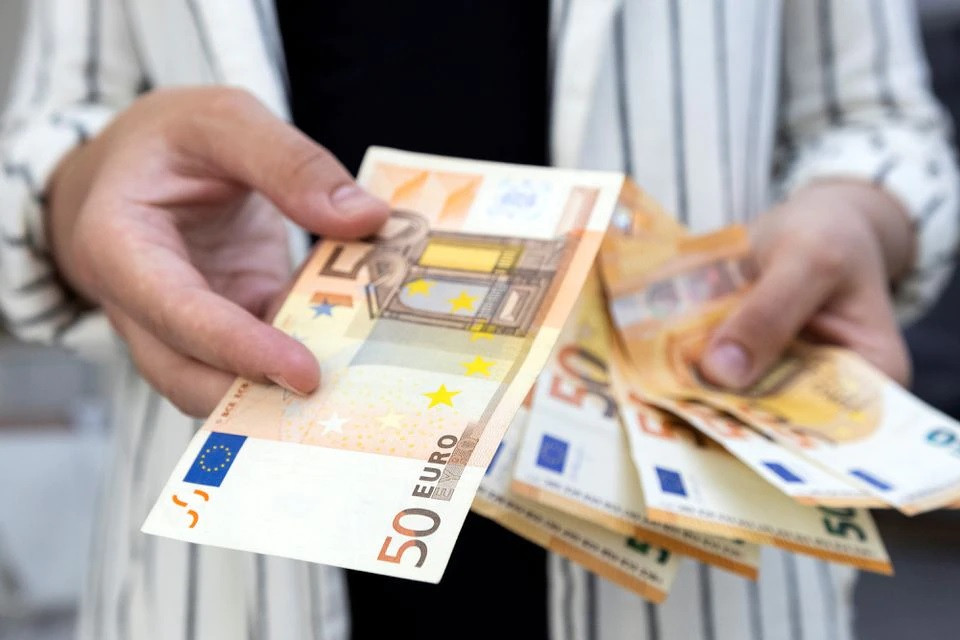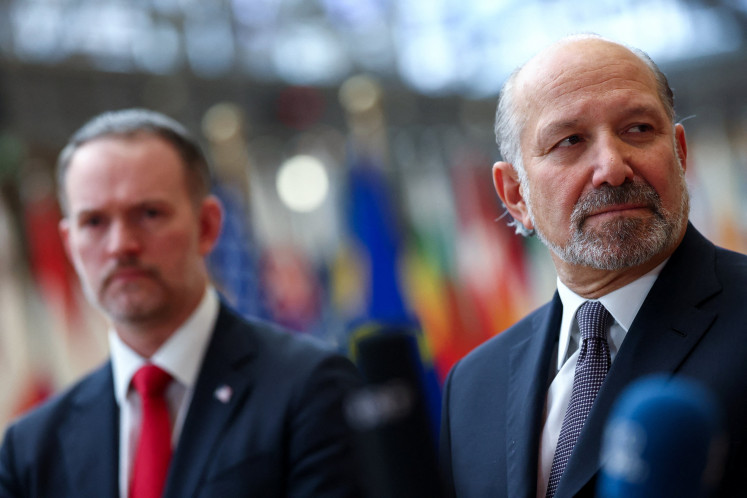Popular Reads
Top Results
Can't find what you're looking for?
View all search resultsPopular Reads
Top Results
Can't find what you're looking for?
View all search resultsEuro under pressure as US-EU trade deal fails to impress
Change text size
Gift Premium Articles
to Anyone
T
he euro struggled to recoup its steep losses on Tuesday as investors sobered up to the fact that terms of the trade deal between the US and the European Union favored the former and hardly lifted the economic outlook of the bloc.
France, on Monday, called the framework trade agreement a "dark day" for Europe, saying the bloc had caved in to US President Donald Trump with an unbalanced deal that slapped a headline 15 percent tariff on EU goods.
German Chancellor Friedrich Merz said his economy would suffer "significant" damage due to the agreed tariffs.
The euro slid 1.3 percent in the previous session, its sharpest one-day percentage fall in over two months, on worries about growth and as euro-area government bond yields fell.
The common currency last traded 0.07 percent higher at $1.1594.
"It hasn't taken long for markets to conclude that this relatively good news is still, in absolute terms, bad news as far as the near term implications for euro zone growth are concerned," said Ray Attrill, head of FX research at National Australia Bank.
"The deal has been roundly condemned by France while others - including German Chancellor Merz, are playing up the negative consequences for exporters, and with that, economic growth."
The slide in the euro in turn boosted the dollar, which jumped 1 percent against a basket of currencies overnight.
The dollar held on to gains on Tuesday and knocked sterling to a two-month low of $1.3349. The yen edged marginally higher to 148.49 per dollar.
The dollar index steadied at 98.67.
"While the US dollar's strength [...] may reflect the perception that the new US-EU deal is lopsided in favor of the US, the US dollar's strength may also reflect a feeling that the US is re-engaging with the EU and with its major allies," said Thierry Wizman, global FX and rates strategist at Macquarie Group.
Still, Trump said on Monday most trading partners that do not negotiate separate trade deals would soon face tariffs of 15 percent to 20 percent on their exports to the United States, well above the broad 10 percent tariff he set in April.
Elsewhere, the Australian dollar eased 0.05 percent to $0.6518, while the New Zealand dollar was little changed at $0.5972.
The offshore yuan was little changed at 7.1813 per dollar.
Top US and Chinese economic officials met in Stockholm on Monday for more than five hours of talks aimed at resolving long-standing economic disputes at the center of a trade war between the world's top two economies, seeking to extend a truce by three months.
Apart from trade negotiations, focus this week is also on rate decisions from the Federal Reserve and the Bank of Japan (BOJ).
Both central banks are expected to stand pat on rates, but traders will watch subsequent comments to gauge the timing of their next moves.










